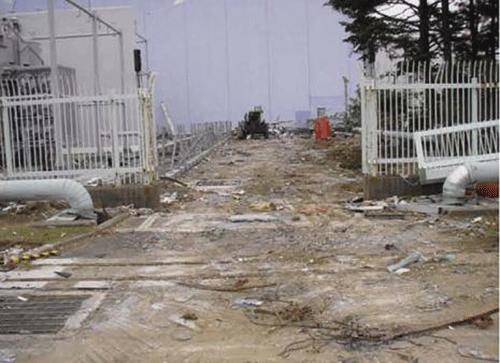Obsessed with all things ‘now’ and ‘today’, the media are distinguished by a hopelessly short memory. Yesterday is ages ago, and anything that occurred last month might as well have happened in 1837, or not at all. When the news is no longer new the circus leaves town and a deep silence sets in. This is what happened after Japan’s March 11 earthquake and tsunami triggered a nuclear meltdown at Fukushima plant.
Following a fast and furious frenzy of media coverage, Fukushima’s fate and victims have disappeared from the radar, apart from on one day, May 20, when Masataka Shimizu resigned as President of the Tokyo Electric Power Company (Tepco), which owns the Fukushima plant, as it reported a net annual loss of $15 billion. Meanwhile, it remains to be seen how much Tepco will have to pay in compensation. Due to the radiation leaked into the atmosphere, some 50,000 families were forced to leave their homes, while more than 10 million liters of water contaminated with radioactive particles leaked into the sea. The financial and physical damage to human and marine life is hard to determine. The company itself has yet to issue an estimate, but analysts have indicated the total sum could amount to $125 billion. No wonder Tepco’s share price has fallen by 80 percent since March.
Meanwhile, the Japanese authorities have established a fund with which Tepco can compensate the victims. The company is obliged to pay back the government as soon as it returns to its profitable ways. Not known is what will happen were the firm to go bankrupt. Helped by a powerful lobby and PR machine, promoters of the nuclear option like to paint a safe and carefree picture of cheap, affordable energy. It’s true that, once up and running, nuclear power plants produce relatively cheap electricity.
However, the cost of such unforeseen disasters as Chernobyl and Fukushima are not part of the calculations. Nor is a reliable estimate of the cost of nuclear decommissioning. The average lifespan of the world’s more than 450 nuclear plants is some 30 to 40 years, although many function well beyond their expiry date. Once a nuclear plant is no longer safe to operate, it should be dismantled, while the site on which it stood should be decontaminated. Unfortunately, the nuclear industry has very little experience in decommissioning.
American nuclear power plants today reckon with an estimated decommissioning cost of some $325 million per reactor, and that is likely being optimistic. In France, the cost of decommissioning the relatively small Brennilis facility, which was only operational from 1967 till 1979, today amounts to some $650 million, no less than 20 times the amount initially estimated. Hence the reason why the big clean-up, like that of four other nuclear sites in France, has been postponed indefinitely. In Britain, the Nuclear Decommissioning Authority has altered its cost estimates several times and currently predicts a price tag of $100 billion for cleaning 19 nuclear sites.
While the Fukushima drama has triggered an intense debate over nuclear power in Europe, most Arab countries continue as if nothing has happened. Abu Dhabi remains determined to build four nuclear power plants on its shore, Riyadh recently signed a nuclear research agreement with China and Jordan is set to announce on June 30 the winning bid for building its first reactor. As none of these countries is particularly known for its free and critical media, the region’s nuclear future is largely determined in silence. There is one exception: Israel.
While the Israeli authorities recently shelved plans to invest in nuclear power generation, journalists, MPs and nuclear experts — for the first time ever — dared call for more openness regarding Israel’s, and the region’s, only nuclear facility at Dimona. They want to know if the ultra-secret, nearly-60-year-old military facility is still safe and where its waste is buried. And so they should: while the inland, desert facility is unlikely to be hit by a tsunami, it is situated only 30 kilometers south of the earthquake-prone Great African Rift.
But on the other hand, why worry? After all, the last big quake to hit the Galilee occurred in 1837, so long ago that it might as well have never really happened at all.
PETER SPEETJENS is a Beirut-based journalist








